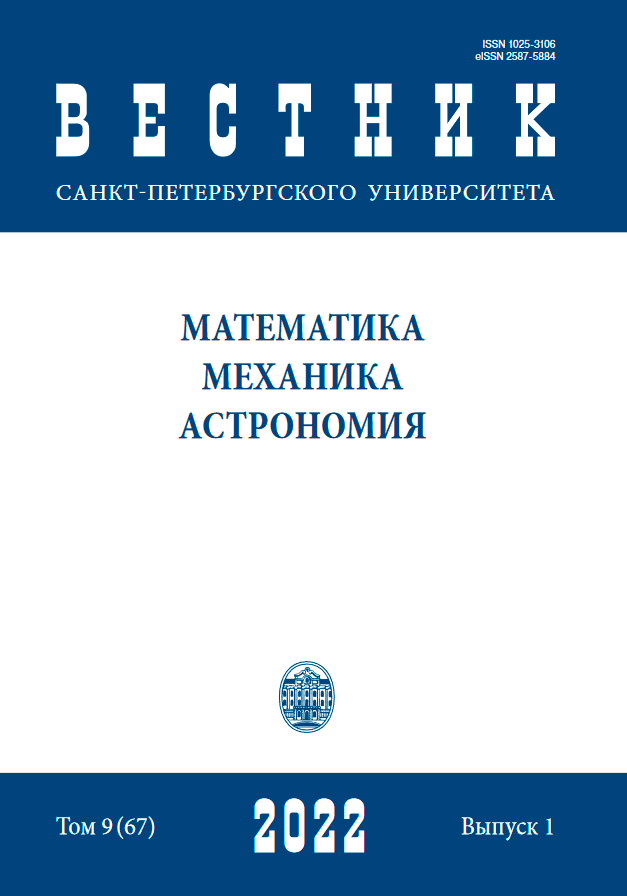Численное моделирование столкновений сфероидальных галактик: эффективность потери массы барионными компонентами
DOI:
https://doi.org/10.21638/spbu01.2022.117Аннотация
На основе численного моделирования подробно рассмотрена динамика столкновения двух сфероидальных галактик, каждая из которых состоит из массивной подсистемы темной материи, звездной и газовой компонент, располагающихся внутри темного гало. Темное вещество и звезды являются бесстолкновительными системами, поэтому их динамика описывается моделью N тел, а газовая компонента - уравнениями газодинамики. Для вычисления гравитационных сил мы применяем метод прямого суммирования гравитационного вклада от каждой частицы, обеспечивая максимально возможную точность. Мы варьируем прицельный параметр, скорость начального сближения, массы трех компонент у каждой модели галактик с целью оценить относительные доли потерянных масс каждой из галактик в результате близких взаимодействий, а также доли масс газа и звезд, которыми обмениваются галактики в процессе рассеяния. Для оценки массы газа, которым обмениваются сталкивающиеся объекты, мы используем лагранжев подход для моделирования газодинамики - метод Smoothed Particle Hydrodynamics, позволяющий отслеживать траекторию каждой сглаженной частицы. В моделях столкновения близких по массе галактик наибольшие потери у бесстолкновительных компонент (темная материя + звезды) происходят в области параметров, разделяющих слияние двух объектов в один (большой мержинг), от случая рассеяния, когда после взаимодействия обе гравитирующих системы удаляются друг от друга. Если начальные массы галактик различаются сильно, то теряемая относительная доля массы велика у маломассивного объекта и мала у массивной галактики. Формирование глобальных ударных волн в сталкивающихся системах является ключевым фактором, определяющим эффективность выметания газа из гравитационных потенциальных ям. Эффективность перехода звездной компоненты от одного объекта к другому пренебрежимо мала. Обмен газом может превышать 10% для узкого интервала значений прицельного параметра и начальной скорости столкновения.Ключевые слова:
численное моделирование, модель N тел, вычислительная газодинамика, метод SPH, столкновение галактик
Скачивания
Библиографические ссылки
Литература
References
Загрузки
Опубликован
Как цитировать
Выпуск
Раздел
Лицензия
Статьи журнала «Вестник Санкт-Петербургского университета. Математика. Механика. Астрономия» находятся в открытом доступе и распространяются в соответствии с условиями Лицензионного Договора с Санкт-Петербургским государственным университетом, который бесплатно предоставляет авторам неограниченное распространение и самостоятельное архивирование.




